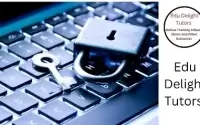Board Practice Techniques in Technical Drawing – Basic Technology JSS 1
Basic Technology JSS 1 Second Term Lesson Notes – Week 6
Board Practice I
Subject: Basic Technology
Class: JSS 1
Term: Second Term
Week: 6
Age: 10 – 12 years
Duration: 40 minutes
Behavioral Objectives
By the end of the lesson, students should be able to:
- Explain how to properly set up a drawing paper on the drawing board.
- Demonstrate the correct method for sharpening a pencil to a conical point and knife edge.
- Use drawing instruments to draw border lines, parallel lines, vertical lines, and a title block.
- Apply board practice techniques to ensure neat and accurate drawings.
Keywords
- Board Practice – The correct way of handling drawing tools and materials on the drawing board.
- Title Block – A section on the drawing sheet that contains information such as the title, date, and name.
- Border Lines – The lines that frame a drawing sheet.
- Parallel Lines – Lines that run side by side and never meet.
- Vertical Lines – Straight lines that run from top to bottom.
Set Induction (Entry Behavior)
- The teacher displays a properly set-up drawing sheet and an incorrectly set-up one.
- The teacher asks students to describe what they notice about both sheets.
Learning Resources and Materials
- Drawing board
- Drawing paper
- T-square and set squares
- Drawing pencils (HB, 2H)
- Compass and dividers
- Eraser and masking tape
- Ruler and protractor
Building Background/Connection to Prior Knowledge
Students have previously learned about drawing instruments and how to care for them. This lesson will focus on how to use them properly on a drawing board.
Embedded Core Skills
- Creativity – Designing neat and accurate drawings.
- Critical Thinking – Applying precision in using drawing instruments.
- Collaboration – Working with classmates to improve drawing techniques.
Lesson Content
1. Setting the Drawing Paper on the Drawing Board
To correctly attach a drawing paper to the board:
- Place the drawing paper at the center of the board.
- Align the paper with the edges of the board using a T-square.
- Secure the paper with masking tape or clips at all four corners.
- Ensure the paper is smooth and flat to avoid errors while drawing.
2. Sharpening a Pencil to a Conical Point and Knife Edge
- Conical Point:
- Use a sharpener or sandpaper to create a smooth, rounded tip.
- Suitable for general sketching and freehand drawing.
- Knife Edge:
- Use a sharp knife or blade to carve one side of the pencil to a sharp edge.
- Suitable for technical and precise drawings.
3. Using Drawing Instruments to Draw Basic Lines
| Type of Line | Instrument Used | Method of Drawing |
|---|---|---|
| Border Lines | T-square and ruler | Draw thick lines around the edges of the paper. |
| Parallel Lines | T-square and set square | Place the T-square on the edge of the board and use the set square to draw lines. |
| Vertical Lines | Set square and ruler | Hold the set square against the T-square and draw straight down. |
| Title Block | Ruler and pencil | Draw a box at the bottom right corner and include name, date, and title. |
Evaluation (Fill in the Blanks with Multiple-Choice Options)
- The correct way to fix a drawing paper on a drawing board is by using _______.
a) Glue
b) Masking tape or clips
c) Water
d) Eraser - A T-square is used to draw _______ lines.
a) Curved
b) Zigzag
c) Horizontal
d) Circular - A conical point pencil is best for _______.
a) Writing letters
b) Shading
c) General sketching
d) Freehand drawing - The correct way to draw vertical lines is by using a _______.
a) Protractor
b) Set square and T-square
c) Compass
d) Divider - A title block is placed at the _______ corner of a drawing sheet.
a) Top left
b) Bottom right
c) Center
d) Top right - Parallel lines always run _______.
a) Away from each other
b) Perpendicular to each other
c) Side by side without meeting
d) In circles - The best instrument for measuring angles is a _______.
a) Compass
b) Protractor
c) Divider
d) Ruler - To keep a drawing sheet smooth on the board, it should be _______.
a) Rolled
b) Stretched
c) Bent
d) Folded - A knife-edge pencil is best for _______.
a) Freehand drawing
b) Precision and technical drawing
c) Writing notes
d) Coloring - To prevent paper movement while drawing, you should use _______.
a) Clips or masking tape
b) Glue
c) Eraser
d) Pencil shavings
Class Activity Discussion (FAQs and Answers)
- Why should we fix drawing paper properly on the board?
- To ensure accuracy and prevent movement while drawing.
- What is the difference between a conical point and a knife edge?
- A conical point is rounded and used for sketching, while a knife edge is sharp and used for precision.
- What instrument is used to draw border lines?
- A T-square and ruler.
- Where is the title block placed?
- At the bottom right corner of the drawing sheet.
- How do you maintain straight lines when drawing?
- By using a T-square and set square properly.
- What is the importance of sharpening pencils correctly?
- It ensures accuracy and neatness in drawing.
- How do you prevent drawing paper from tearing?
- Avoid using excessive force when erasing and use quality paper.
- What should you do if the drawing paper shifts while drawing?
- Reattach it securely with clips or masking tape.
- Why do we need parallel lines in technical drawing?
- They are used to maintain consistency and alignment in drawings.
- How can we ensure a smooth and clean title block?
- Use a ruler and draw it neatly with a sharp pencil.
Presentation Structure
- Introduction: The teacher shows students how to set up a drawing paper correctly.
- Explanation: The teacher demonstrates sharpening techniques for pencils.
- Practical Activity: Students practice setting up their drawing paper and sharpening pencils.
- Guided Practice: Students use drawing instruments to create border lines, parallel lines, and title blocks.
- Correction & Feedback: The teacher corrects mistakes and reinforces key techniques.
Assessment (Short-Answer Questions)
- Why is it important to attach the drawing paper properly to the board?
- Mention two types of pencil sharpening techniques.
- What instrument is used to draw border lines?
- Where is the title block located on the drawing sheet?
- What is the function of the set square in technical drawing?
- How do you ensure that a line is parallel?
- What is the purpose of a knife-edge pencil point?
- What happens if a drawing paper is not secured properly?
- Why are vertical lines important in drawings?
- What should be included in the title block?
Conclusion
The teacher marks students’ work, provides feedback, and emphasizes the importance of board practice techniques in achieving accurate and neat technical drawings.
Types and Uses of Drawing Instruments – Basic Technology JSS 1 Second Term
Related
Related posts:
- Care and Maintenance of Drawing Instruments – Basic Technology JSS 1
- Revision of First Term’s Topics – Basic Technology JSS 1 Second Term Lesson
- Freehand Sketching of Workshop Hand Tools – Basic Technology JSS 1
- Workbench Fittings and Appliances – Basic Technology JSS 1
- Basic Technology JSS 1 Second Term Revision Questions and Answers
Related Posts

Factors of Production: Meaning and Importance

Advance Fee Fraud Prevention Security Education JSS 1 First Term Lesson Notes Week 4
JSS 1 THIRD TERM LESSON NOTE BASIC TECHNOLOGY
About The Author
Edu Delight Tutors
Am a dedicated educator with a passion for learning and a keen interest in technology. I believe that technology can revolutionize education and am committed to creating an online hub of knowledge, inspiration, and growth for both educators and students. Welcome to Edu Delight Tutors, where learning knows no boundaries.